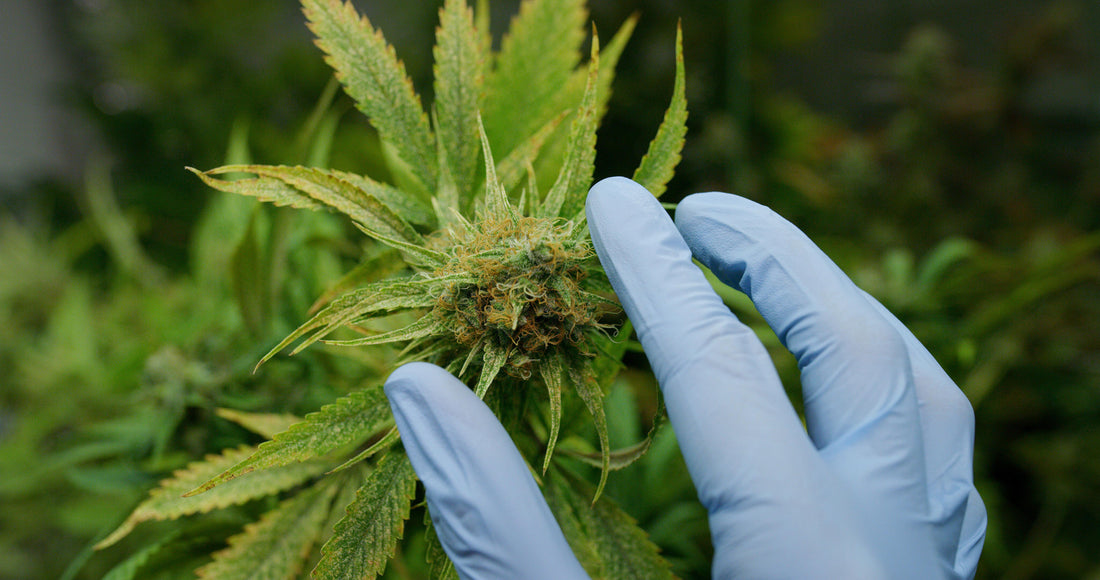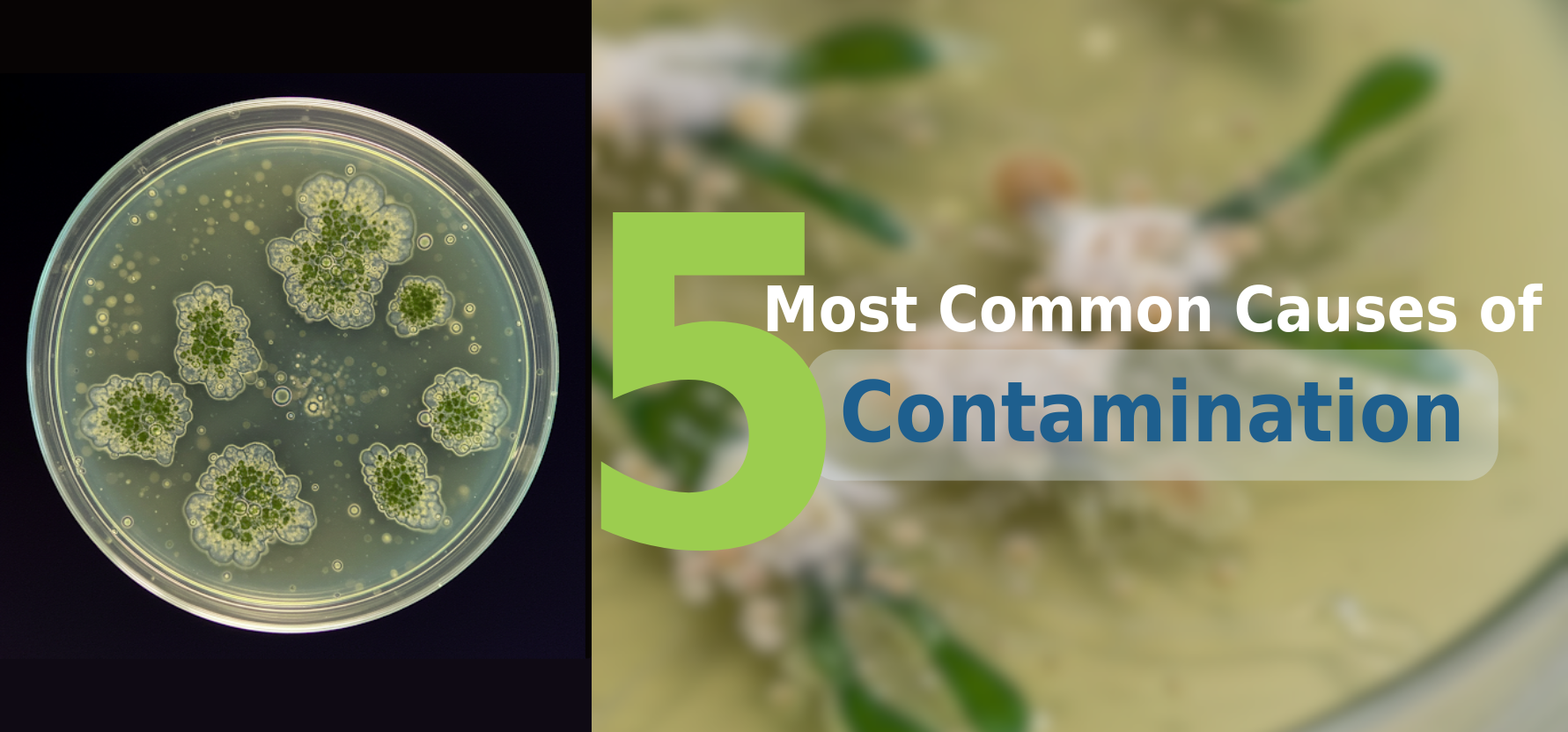
The 5 Most Common Pathogens That Infect Cannabis
As a content and community manager, I leverage my expertise in plant biotechnology, passion for tissue culture, and writing skills to create compelling articles, simplifying intricate scientific concepts, and address your inquiries. As a dedicated science communicator, I strive to spark curiosity and foster a love for science in my audience.


The Cannabeaceae family consists of three popular and highly cultivated plant species: Hemp (C. sativa): It has a good amount of oilseed and fiber in its flowers and stems and recently, it has been grown a lot for the production of cannabinoids.
Introduction
The Cannabeaceae family consists of three popular and highly cultivated plant species:
- Hemp (C. sativa): It has a good amount of oilseed and fiber in its flowers and stems and recently, it has been grown a lot for the production of cannabinoids.
- Cannabis (Cannabis sativa or marijuana): It’s grown for its medicinal and psychotropic properties of compounds present in female flowers.
- Hops (Humulus lupulus): It’s grown for its female cones that are used in the brewing industry to extract and produce alpha acids and for the production of aromatic oils.
The applications of these plants in the medicinal and industrial sectors have influenced farmers to grow Cannabis in large areas. However, the susceptibility of the crop to many pathogen diseases makes it challenging to grow these plants on a large scale.

Figure: An schematic diagram of Cannabis plant parts and diseases that affect them.
In this article, you will learn about the five most common diseases and their symptoms that most affect the growth of cannabis plants. Understanding the pathogens and their symptoms is the first step toward controlling the spread of their diseases.
5 Most Common Pathogens Infecting Cannabis
Fusarium
Fusarium is a soil-borne pathogen species. This causes crown rot, root rot, and damping-off diseases in plants, including cannabis. The species that affect cannabis include F. oxysporum, F. proliferatum, and F. solani.
Their symptoms include:
- Brown and necrotic areas on roots
- Sunken discolored lesions at the base of the plant near the soil line
- Stunted, wilted, and chlorotic foliage.
- Cutting the section of the affected area and observing it under the microscope will show the Whitish-pink mycelium of the pathogen.
The pathogens can spread through soil, water, air, tools, or equipment. So far, no effective treatments are available to treat the plant's disease.
Pythium
It’s also known as water molds. There’s a broad range of Pythium species infecting cannabis plants, including P. myriotylum, P. dissotocum, P. aphanidermatum, and P. ultimum. It causes root rot, crown rot, and damping-off diseases in plants. The pathogen has a broad host range, so it can also spread from one plant to the other.
- Brown and rotten roots.
- Lack of feeder roots.
- Soughing off of the outer region of the infected roots.
- Dark, sunken lesion on the crown, which can extend up to stems.
- Stunted plants and yellow leaves.
- Wilting in sunny and warm seasons.
- An odor comes from diseased plants in weather due to the invasion of bacteria in the infected part.
The disease can be controlled by disinfecting the seeds of the infected plants, reducing soil humidity, and treating the soil.
Golovinomyces
It causes powdery mildew, the most destructive cannabis disease. The plant can enter the plant and keep growing without showing any symptoms for about two weeks. After two weeks the pathogen sporulates and observes into flowering. Cloning or transporting seeds of the infected plant is an easy way the spread the disease. The species that infect the cannabis plant include G. cichoracearum, G. ambrosiae, or G. spadiceus.
The symptoms of the disease are:
- Spores of the pathogen can be observed on the leaves, stems, and flowers of the plant.
- Brown leaves and later their detachment from the plant prematurely.
- Stunted plants and poor-quality flowers.
The disease can spread through air, clothing, or contaminated equipment. They can also be introduced into the facility through infected plants, Therefore, it’s necessary to examine mother plants for the presence of the diseases.
Botrytis
It causes mold infection in plants and is thus often also known as gray mold or bud rot. As the infection starts in the bud, it can remain unnoticed for a long time before sporulation. In cannabis, it can cause stem canker. The pathogen has an extensive range of hosts and that’s why they can be transferred from one host to another through the air.
Its symptoms include:
- Soft and discolored buds, which later turn brown and crisp.
- Sunken tan or cream areas on the main stem or at a branching point.
The infection can be transferred to future generations via seeds.
Hop Latent Viroid
It’s a circular, single-stranded infectious RNA. It was first discovered in hop plants but infects a range of other plants. The pathogen can remain growing without getting noticed. Its symptoms include:
- Stunted plants with loose and small buds
- Fewer trichomes
- Stretched and horizontal plant growth
- Brittle stems
- Malformed or chlorotic leaves
The disease can spread through infected mother plants, contaminated tools or equipment, and the clothes and hands of the staff. A lengthy tissue culture process is required if the plant is infected by the viroid.
Choose Plant Cell Technology to enhance your cannabis tissue culture experience
To help the cannabis culturists with their tissue culture processes and help them to pass through the challenging phases, PCT is providing world-class consulting services.
The consulting services are available in two forms: one-on-one phone calls and on-site visits. So, if you need an instant solution for your specific challenges you can have a one-on-one call with our scientists and get your answers instantly.
However, if you are someone building a cannabis tissue culture lab or are already an established lab that is looking to train its staff or wants solutions for pathogen eradication in its commercial-scale plants, you can choose an on-site visit consulting service. Our team will visit your lab and will guide you through the whole process.
The services included in the on-site visits are:
- Blueprint, Budget, & Equipment: build and operate a successful tissue culture lab. Media Preparation: 2 sets of proprietary media preparation SOPs (4 in vitro shoot multiplication protocols and 5 in vitro rooting protocols along with coaching on how to conduct factorial trials).
- Micropropagation: how to select, surface sterilize, and induce nodes into media for removal of surface pathogens and in vitro cloning applications.
- Meristem Dissection: how to dissect apical meristem to remove viruses including HpLvd, Cannabis Cryptic Virus, Lettuce Chlorosis Virus, and more.
- Synthetic Seed and Cryopreservation: Long term genetic storage solutions.
- Pathogen Remediation by Media Amendments: how to remove viruses, systemic fungi, bacterial infections, and endophytes.
- Gender and Pathogen Screening by PCR: Eliminate male plants, identify cannabinoid ratios, and protect your mothers from pathogens and pests
Blog Categories
View by Level
Popular Blogs

The 5 Most Common Causes of Contamination in Tissue Culture Labs
Introduction Scaling up your tissue culture production is impossible if you’re constantly battling contamination. Contamination is one of the biggest...
Read More
What No One Tells You About Subculturing (Until It’s Too Late)
Introduction Subculturing is a crucial process in tissue culture. Why? Because it's responsible for multiplying a single small piece of...
Read MoreSubscribe to Our Newsletter







Join the conversation
Your email address will not be published. Required fields are marked